AP Art History: Units 1 and 2 – Global Prehistory
1/21
There's no tags or description
Looks like no tags are added yet.
Name | Mastery | Learn | Test | Matching | Spaced |
|---|
No study sessions yet.
22 Terms
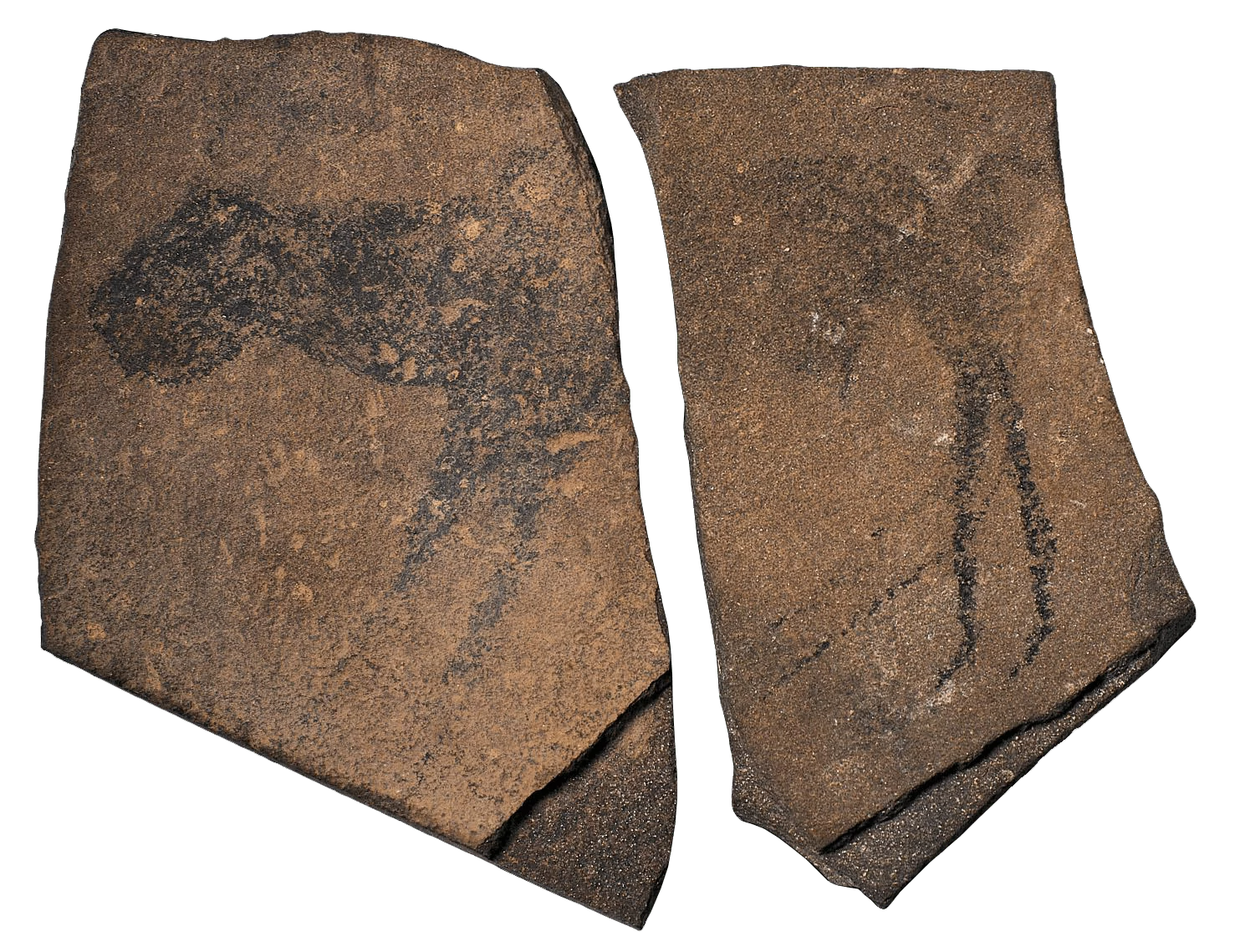
Apollo 11 Stones
Namibia
25,500 – 25,300 BCE
Charcoal on stone
One of the oldest works of art, found in Wonderwerk Cave
Emphasis on animals, depicts a potentially feline body with human legs and hips → composite animal
suggests existence of human-animal shapeshifter
Its mobiliary nature is important because of nomadism
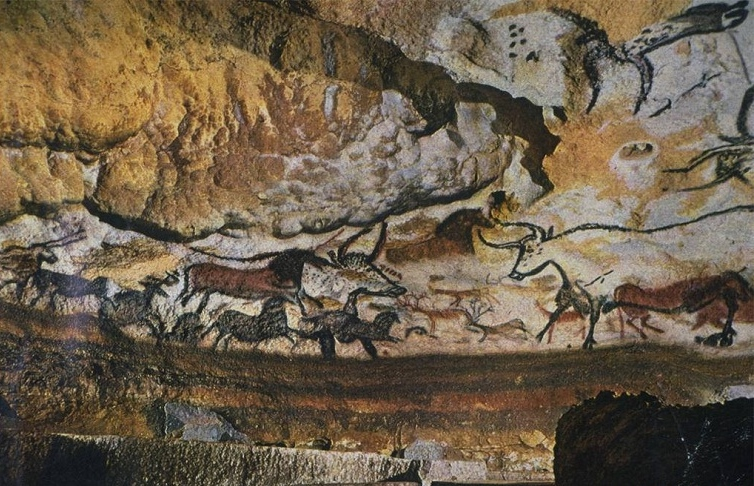
Great Hall of the Bulls
Lascaux, France.
15,000 – 13,000 BCE
Rock painting, using brushes made from horse hair and bones/reeds
Artists were animal-dependent nomads, used twisted perspective to emphasize animal identity and because lighting was inconsistent/more dynamic
Drawn on top of other art because that was considered normal
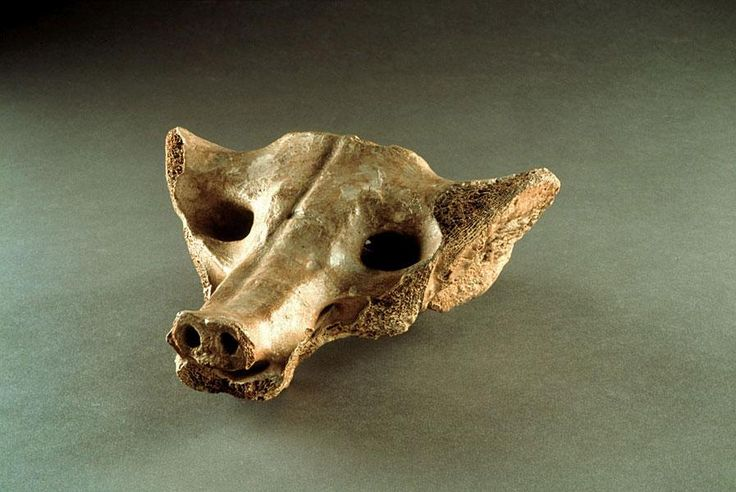
Camelid sacrum (in the shape of a canine)
Tequixquiac, central Mexico
14,000 – 7000 BCE
The bone at the bottom of the spine
Altered only slightly to resemble an animal because they have a reverence of nature
Creation reflects belief that the sacrum itself is said to have power / be the “second head,” which was spiritually important to the people of Tequixquiac
Process of turning one thing into another was considered ritualistic

Tlatilco female Figure
Tlatilco, Central Mexico
1200-900 BCE
Ceramic, hand made
Reflects the value of the female body and fertility → other parts of the body that aren’t specific to females are stylized/omitted
Used for home burials
Two heads reflect dualism: seeing two worlds at once (an aspect of shamanism)
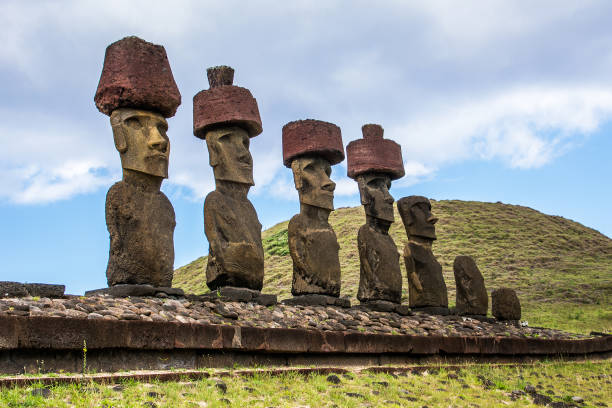
Moai on platform (ahu)
Rapa Nui (Easter Island)
1100-1600 CE
Volcanic tuff figures on basalt base
887 moai total, size and complexity increased over time
14 figures were made from basalt, all others were made from tuff
Ranged from 6-60ft, though most were 36
Head is at least 1/3 of total height
Run parallel to the coast
Backs are purposefully to the sea – they watch over the island + the people.
Creating these required immense resources and labor, which means someone of elevated status may have commissioned it.
No outside influence in their creation, either
These were ceremonial; related to ritual altars.
Peak production occurred in the 1500s, moai were toppled in the 1600s due to loss of faith, overpopulation, and European contact.
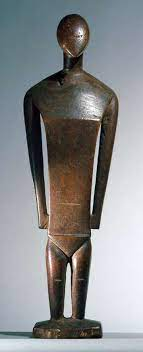
Female deity (Nukuroro)
Nukuoro, Micronesia
1700s-1800s CE
Breadfruit wood → a very hard and glossy material that could pass for metal
Form: emphasized chin and pubic region, suggestion of breast, geometric design.
The geometric form of the statue represents the Nukuoro value of tranquility
Larger than life, wrapped in cloths
Sat in an am’alu (community temple), and was involved in many rituals (including the breadfruit harvest)
Once again, omitted/stylized hands and feet
Many were abandoned due to conversion to Christianity
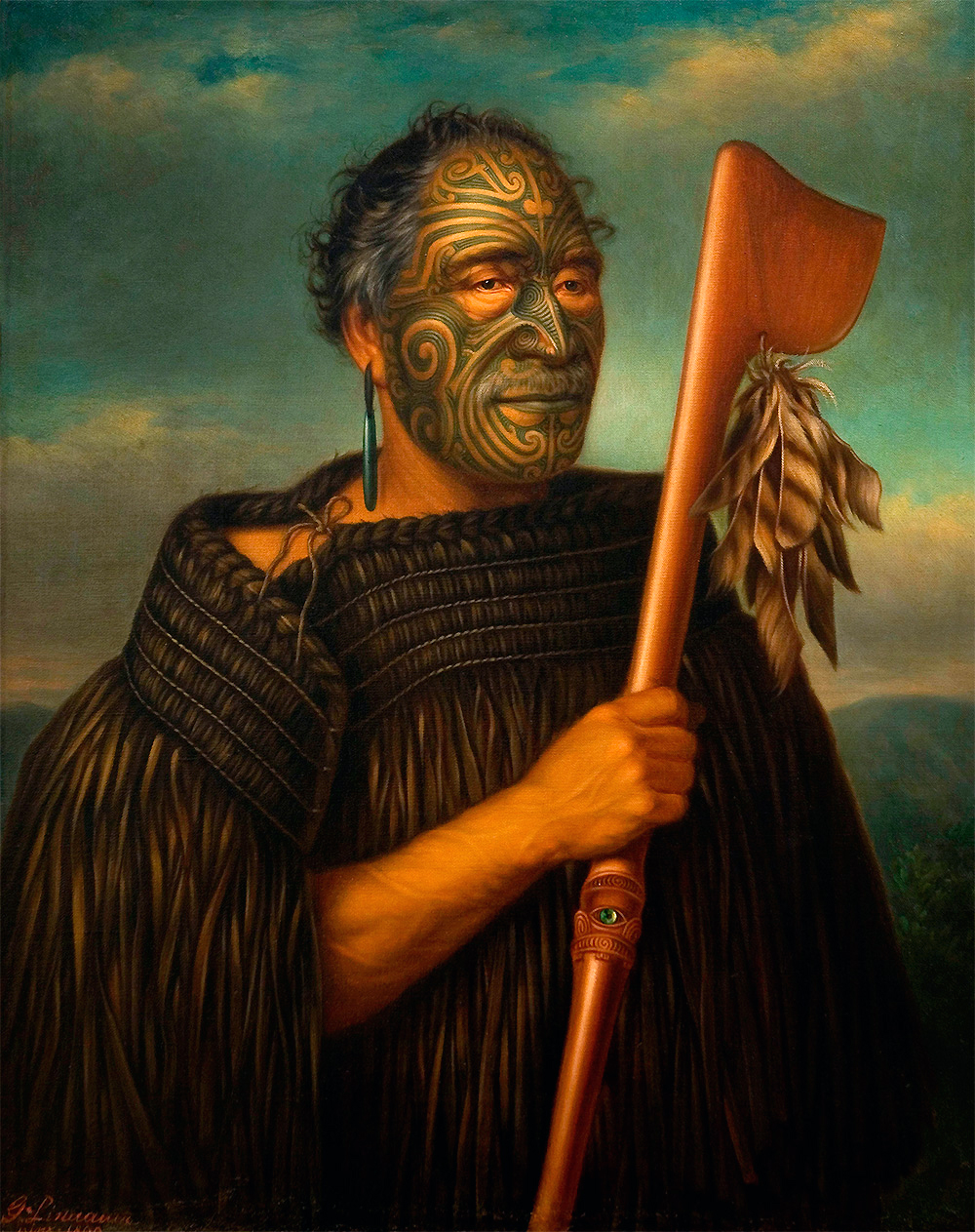
Tamati Waka Nene
Auckland, New Zealand
1890 CE
Painted by Gottfried Lindauer
Oil on canvas
Form: ¾ perspective, organic shapes, the painting representing a moment in time from one POV
These are European traditions
Based on a photograph, created posthumously to preserve Tamati Waka Nene’s presence
Tamati’s clothes are purely imagined (European idea of
The tattooing on his face represents the practice of tapu, the protection of mana, a Maori value
the practice was taken from the Tahitian word “tatau” and spread through Europe
Tattoo: left side of head represents maternal side, right side of head represents paternal side; upper crows’ feet and lips represent personal status
Earring is greenstone, and has apotropaic qualities
Cloak made of kiwi feathers and staff both indicate status as well.
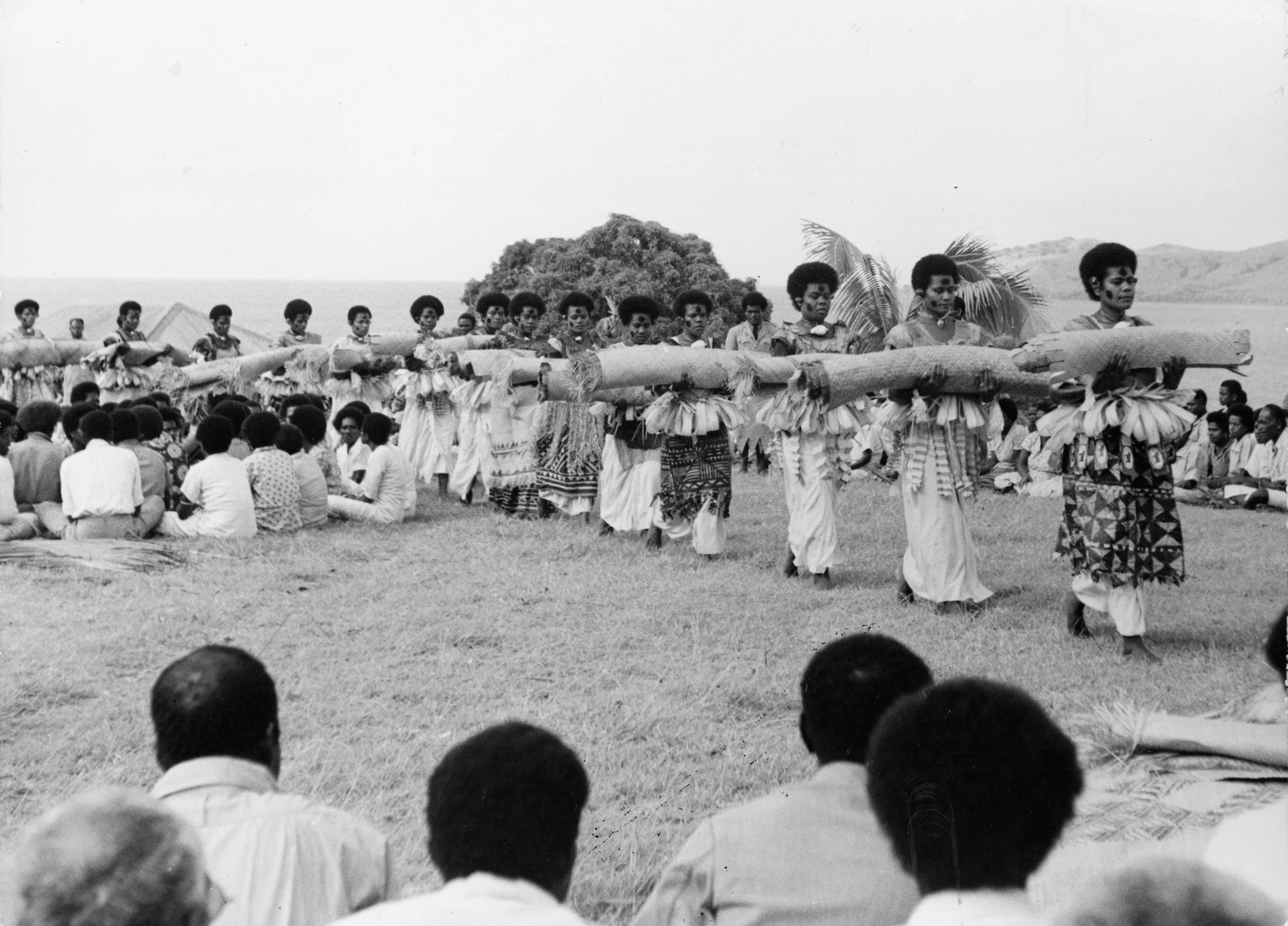
Presentation of Fijian mats and tapa cloths to Queen
Fiji, Polynesia
1953 CE
Multimedia performance (costume, cosmetics, scent, chant, movement, hibiscus fiber mats; photographic documentation)
Queen Elizabeth II, after being coronated, essentially went “on tour” – this included the island of Tonga
She was warmly and ceremonially welcome, being given spiritually and naturally valuable tapa cloth.
Tapa cloth is traditionally given for things like birth/death/coronation/marriage of a sovereign
Women made, carried, and wore the Tapa Cloth
The ceremony activated all the senses, which created memory.
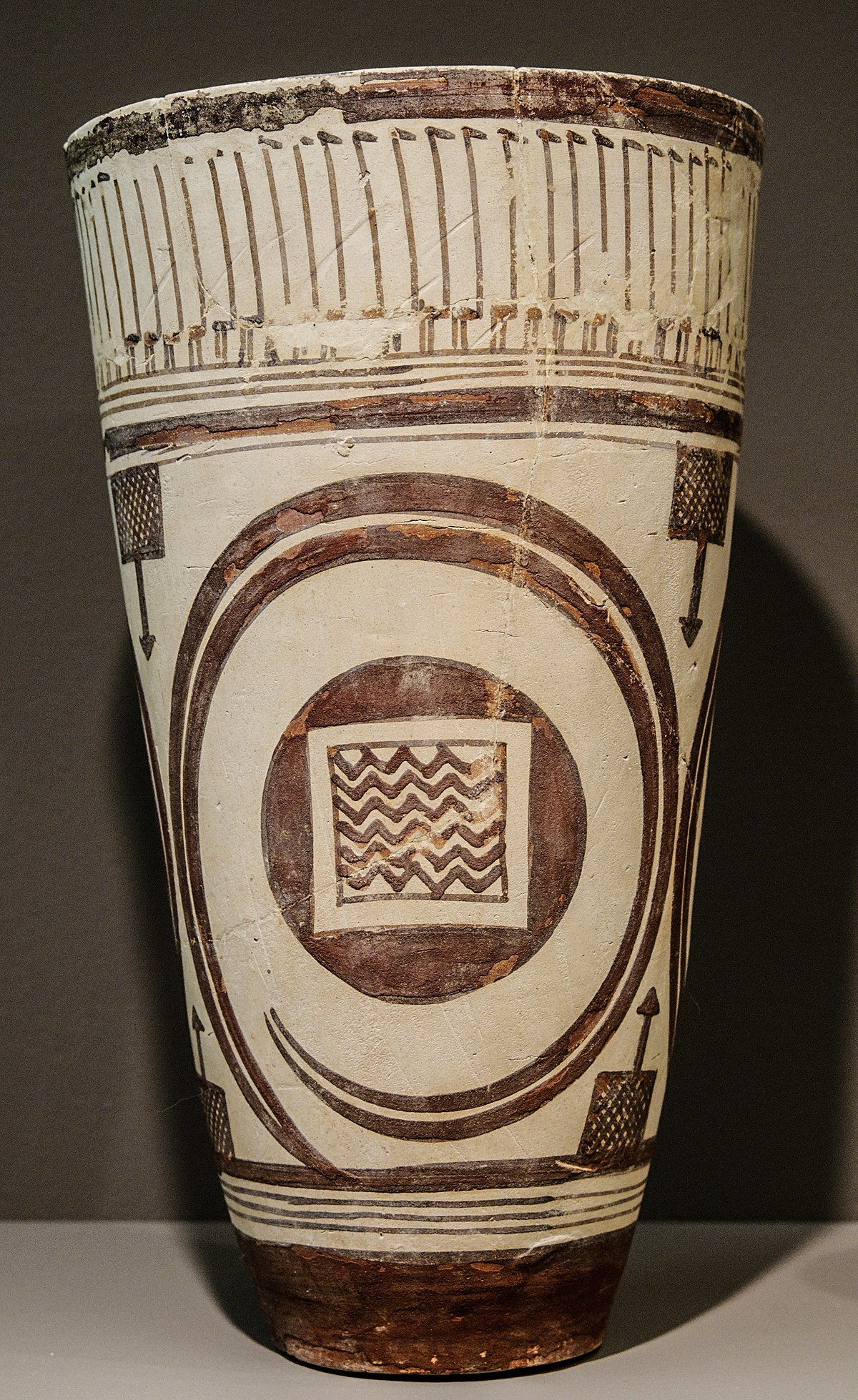
Beaker with Ibex Motifs
Susa, Iran
4200-3500 BCE
Painted terra cotta (refined clay)
One of the first neolithic pieces, when human society was shifting from nomadism to stationary agriculture
This era also introduces ceramics (w/ the purpose of cooking + storing food/water)
Form: geometric shapes, separating registers, abstract animal style, repeating lines (feels orderly/balanced)
This piece, however, is placed in a tomb (funerary/mortuary art) – no one would see it → conspicuous spending at its finest.
The neolithic people learned to refine clay, and they created ceramics — not to use for storage, but for decoration
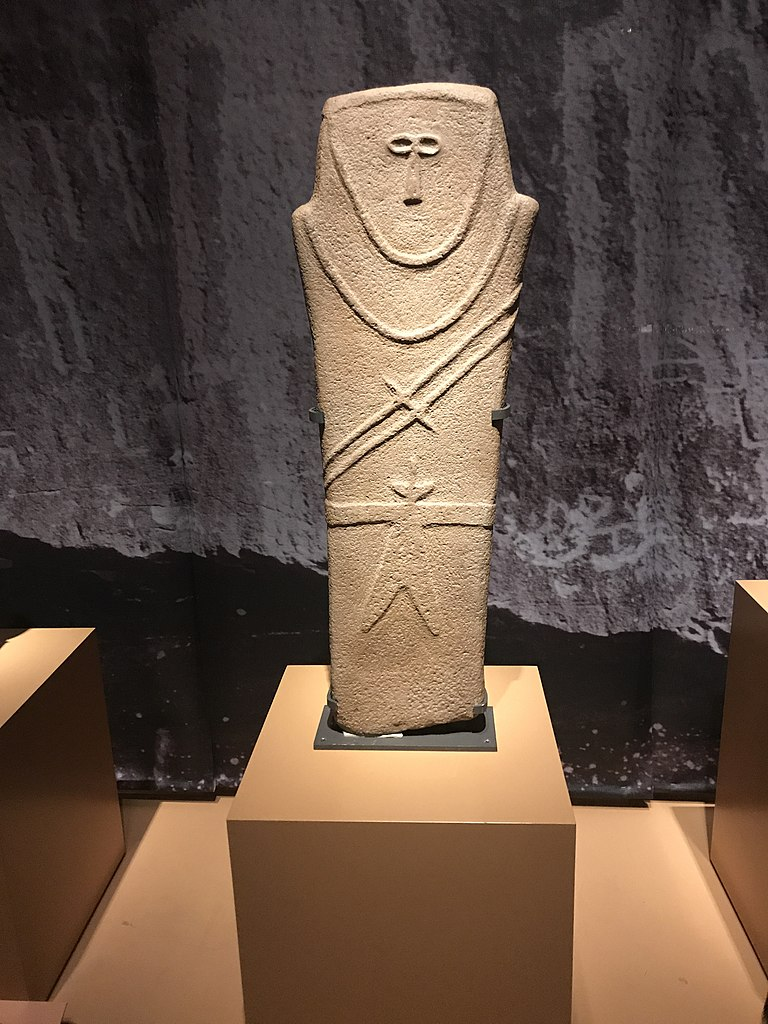
Anthropomorphic Stele
Arabian Peninsula
Fourth millennium BCE
Sandstone
Early Arabian work
Stele: a stone slab that would go into the ground
abstracted face → has the face of a human, but the form itself isn’t
Body isn’t articulated at all, but the double belt (held together by an awl), along with the double blade indicates memorial of authority figure
Likely associated with ritualistic/religious burial activity
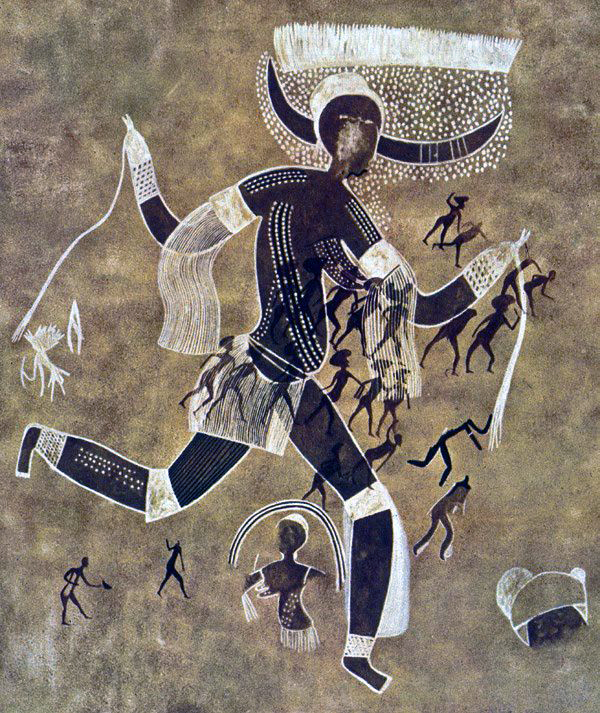
Running Horned Woman
Tassili n’Ajjer, Algeria (Mountain Range)
6000-4000 BCE
Pigment on rock
More than 15,000 paintings and engravings at the site
Form: obvious attributes of a woman, but there’s uncertainty about the “headdress,” “mittens,” etc.
Potentially ritualistic markings
Not created in a cave, easily accessible
Abundant representation of humanity
Composite view of her body
Algeria used to be a lush savannah, but, by 4000 BCE, it becomes the dry desert it is today, and most forms of life leave.
Like in The Great Hall of the Bulls, people painted over others’ work.
Thus, the main figure (the horned woman) and the smaller figures (humans and wildlife)

Terra Cotta fragment (Lapita Stones)
Solomon Islands, Reef Islands
1000 BCE
Incised Terra cotta
Intricate, repeating geometric carved into clay
Stylized/abstract face
Potentially the first people to practice tattooing in the Pacific.
The Lapita people originated in Southeast Asia, but spread throughout the Pacific quickly, bringing tattooing with them.
These stones give ideas of what tattoos may have looked like; similar to pottery and textiles
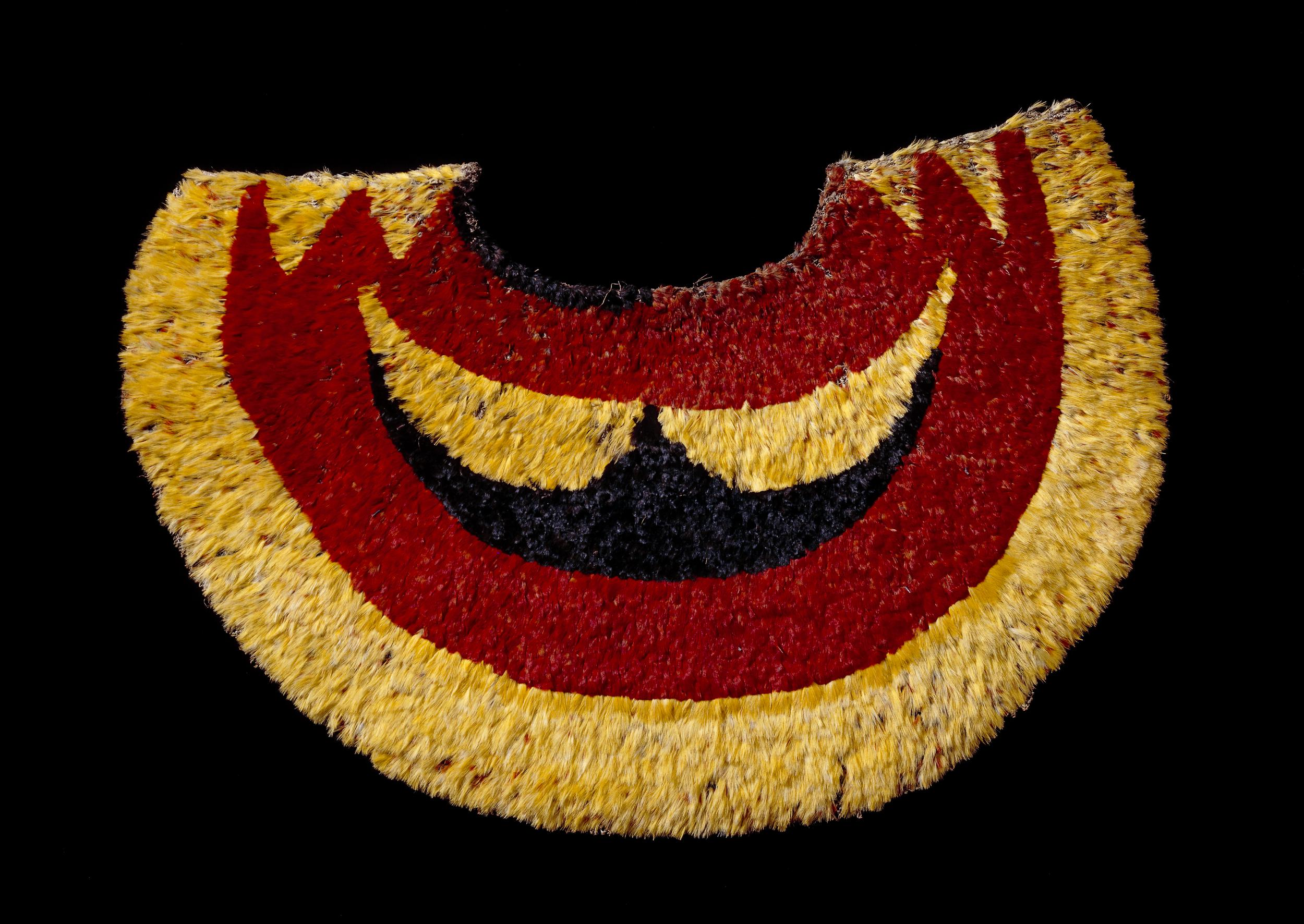
Ahu’ula (feather cape)
Hawaiian (Pacific)
Late 1700s CE
Feathers and fiber
To be worn only by high-ranking chiefs (those with status)
Design for the cloak was divinely inspired and based on tapu practices and ancestry (very similar to tattooing)
The red is associated with divinity and royalty, while yellow is considered a rare color.
The crescent shape of the cloak is apotropaic and grand
Fiber netting is done by men, who chant and pray to imbue power, while women collect the feathers (like Stonehenge, this required a massive effort under a centralized power)
Birds are seen as spiritually connected; cloaks were said to wrap chiefs in the “power of the gods.”
Given as political gifts and taken from clashes (which was seen as an accomplishment, but was also feared to have spiritual ramifications)

Buk mask
Torres Strait (between Papua New Guinea and Australia)
Mid to late 1800s CE
Turtle shell, wood, fiber, feathers, and shell
This mask is meant to be worn + conceal the identity of the wearer\
This mask wasn’t meant to be seen in a static state of motion, but as a part of a costume in movement
This mask could be seen at male initiation rituals, funerals, and “increase rites”
An early example of multimedia art
Stylized/abstract human face with a stylized frigate bird
The frigate bird is essentially their “national bird,” and it’s connected to the spirit realm in Polynesian culture.
All of the materials don’t naturally occur in the Torres Strait → collaborative effort via trade.
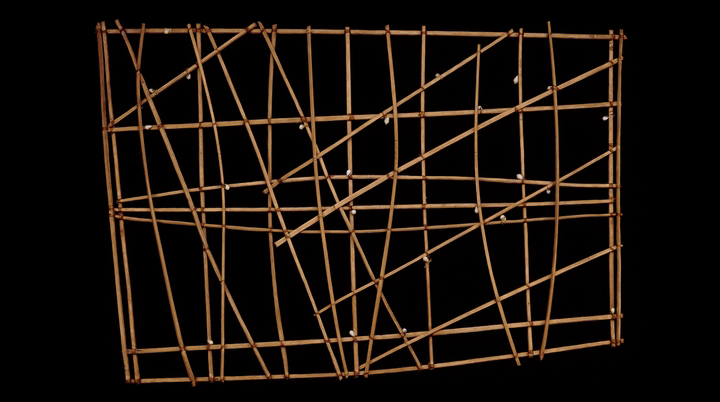
Navigation Chart
Marshall Islands, Micronesia
1800s- early 1900s CE
Wood and fiber
Also called wapepe, these charts were memorized before voyages + helped travelers to make their way through the low lying Marshall Islands
Small clams represent islands and their position on the chart.
Horizontal and vertical sticks are the base, diagonal lines represent wind and current.
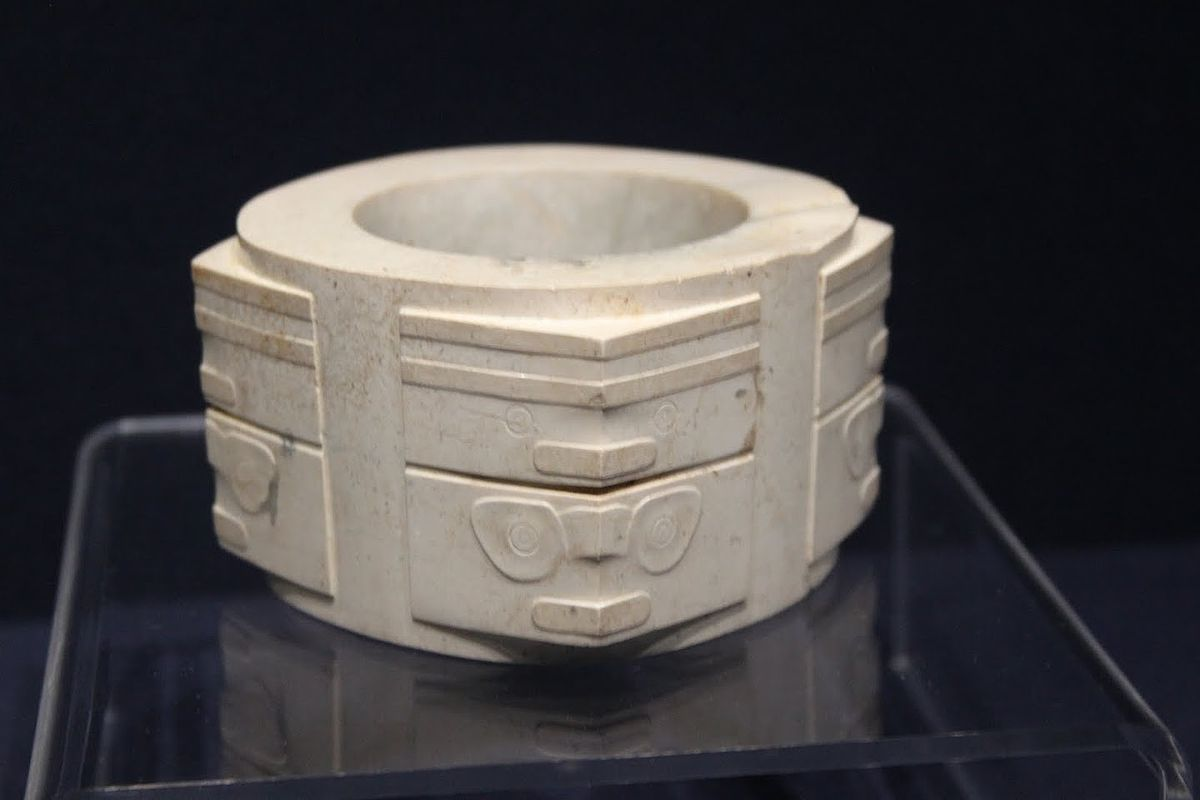
Jade cong
Liangzhu, China
3300-2200 BCE
Carved jade
Jade couldn’t be cut, and shaping took sand, water, and a LOT of time and effort
Only chiefs and shamans owned them (clear sign of wealth)
They were deposited in graves around skeletal remains (for elite burials only)
In a later era, Chinese texts depict circles as heavenly and rectangles as earthly, so many thought of that when viewing the cong.
Very small size.
These are believed to be apotropaic by those who commission them.
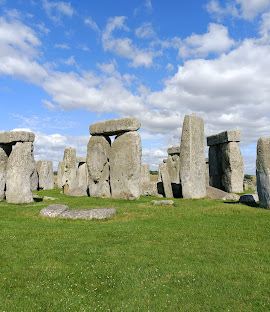
Stonehenge
Wiltshire, UK (Salisbury Plain, Southern England)
2500-1600 BCE
Sandstone (with some Sarsen stones)
Trilithon stones on top locked in by post and lintel construction (mortise shaped to receive tenon)
Tongue and groove: side-to-side fitting
Henge: a circular monument with concentric circles and a ditch
Horseshoe structure in the middle
Site was potentially used as burial grounds for elite cremation burials
Neolithic people used large stones as monoliths.
Existence and function indicate a cohesive society, usage of the henge as an observatory, and the creation of a calendar
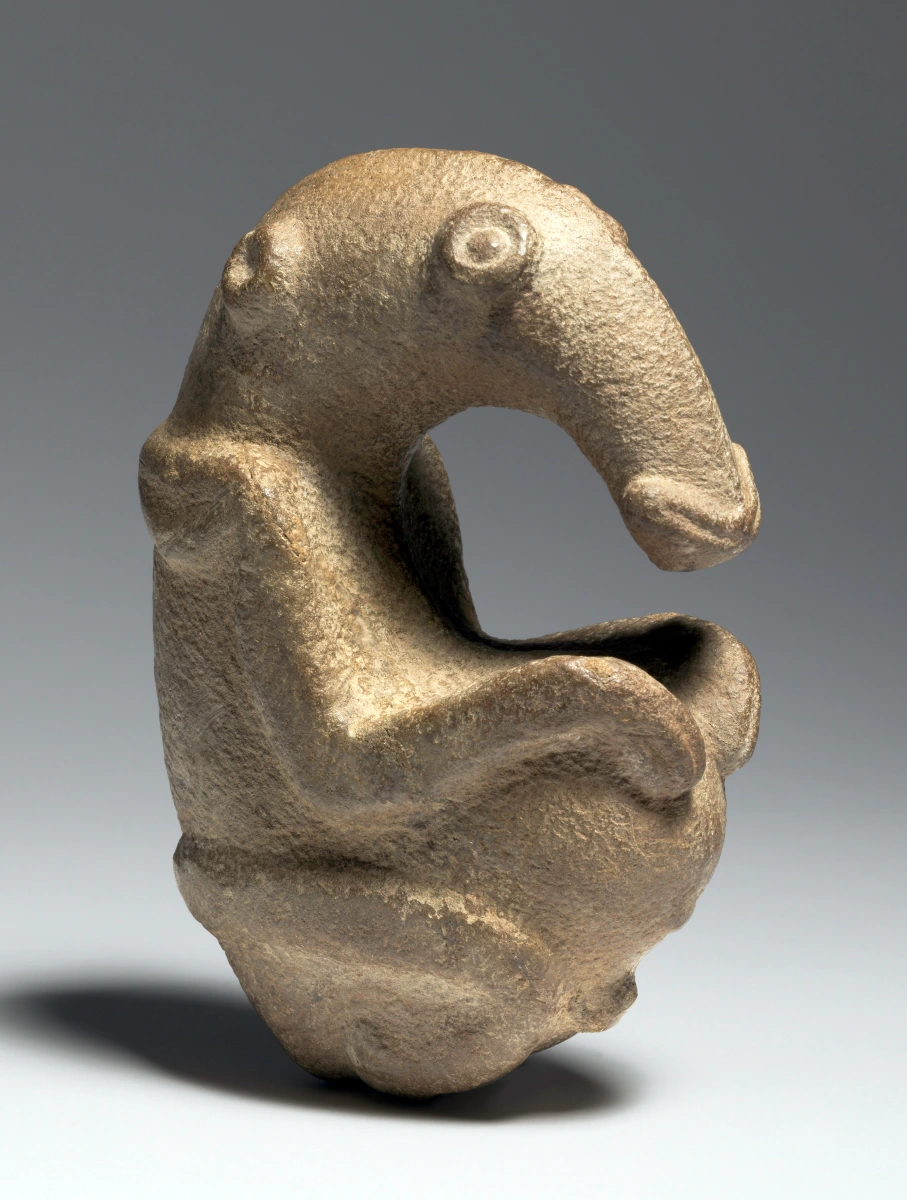
Ambum Stone
Ambum Valley, Enga Province, Papua New Guinea
1500 BCE
Greywacke
Thought to be a ritualistic piece, as contemporary Guineans use greywacke for rituals
Greywacke wasn’t in the area where the stone was found (indicates a mobiliary work)
Crafting a piece like this would require a lot of time and labor
Could be a pestle or mortar, as they often took the form of animals. This, however, is more articulated than a normal pestle.
This piece is zoomorphic.
Thought to represent an anteater or echidna — both were attractive because their fat deposits could be harvested.
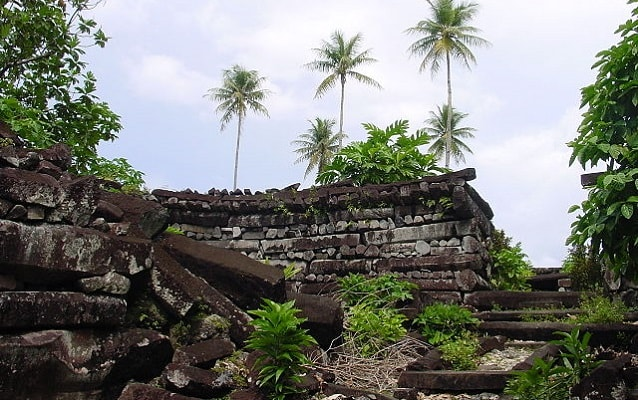
Nan Madol
Pohnpei, Micronesia
700-1600 CE
Saudeleur Dynasty ruled from about 1200-1600 CE
Basalt boulders and prismatic columns
The people who built this were descendants of the founding brothers of the dynasty — which was initially a religious group that worshipped the sea.
92 small artificial islands created, 200 acres total
Built out into the water on a lagoon; similar to Venice, Italy
Created by transporting/stacking basalt(which were labor intensive to quarry → large population under centralized power), which naturally cleaves into columns
50 ton rocks with coral being the fill
Roofs were thatched
For housing the upper class; half for rulers, half for priests, mortuaries, etc.
Most other Pacific structures are made of organic material, and by less isolated peoples.

Staff god (Rarotonga)
Rarotonga, Cook Islands, central Polynesia
1800s CE
Wood, tapa, fiber, and feathers
Very sacred item of Rarotonga — the tapa is the most important part
The body is wrapped in tapa to protect the “deity” within + to protect humans from the deity
Wooden core wrapped in tapa.
The shaft is in the form of an elongated body.
There’s a phallus on the lower end; some missionaries came and removed them.
The soul of the god is represented by polished pearl shells and red feathers, which are placed inside the tapa next to the interior shaft.
Most of the staff gods were destroyed, with only the top parts being kept as trophies.
This one holds Tongaroa — the creative god of Rarotonga.
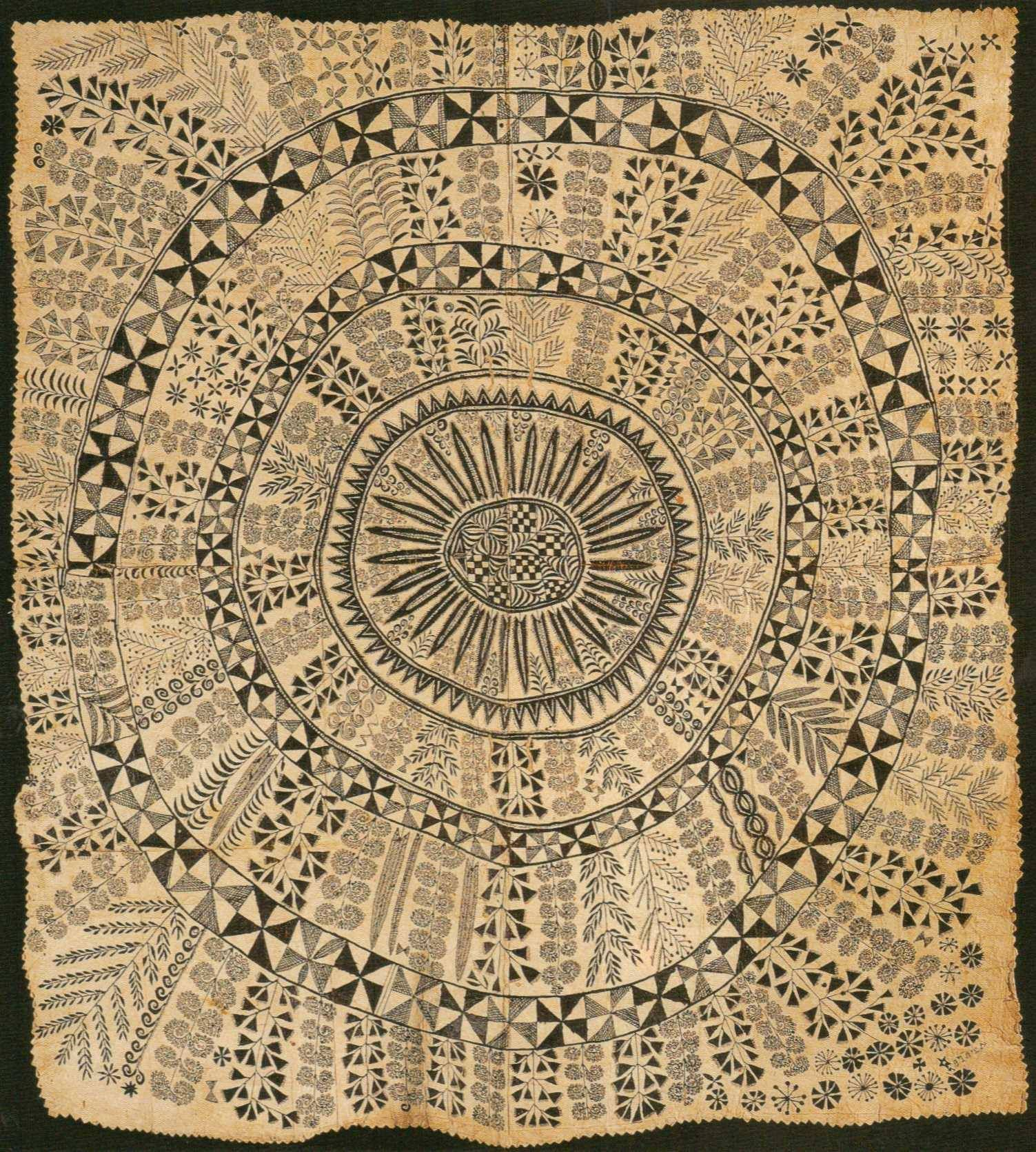
Hiapo (tapa)
Niue
1850-1900 CE
Bark cloth, freehand painting
The only type of cloth in Polynesia before European contact
The process of creating the cloth is pretty much universal throughout Polynesia
Trees are kept by the men, actual cloth is made by the women (from paper mulberry springs fibers)
Production spiked due to contact with Samoan missionaries
After the 1880s, the tapa cloths depicted things the Tongans saw due to European contact.
Geometric shapes indicate Lapita influence
Used as a wall hanging — too small for a blanket or clothing
Form: concentric circles, geometric shapes, fine lines, freehand rather than stamps/stencils, plant forms, signatures
Hiapo is the Niue word for tapa
Tapa takes on a special meaning: commemorating an event, honoring a chief, noting a series of ancestors.
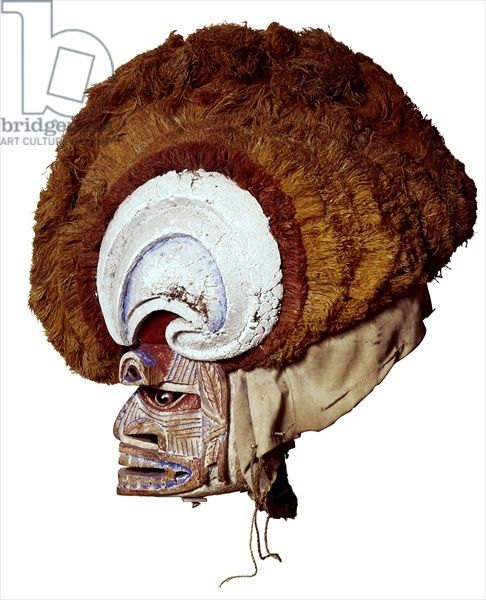
Malagan display and mask
New Ireland Province, Papua New Guinea
1900s CE
Wood, pigment, fiber, and shell
Intricate masks and sculptures are used in ceremonies.
Functions of said ceremonies were pretty much funerary, and included releasing souls after death, restoring order, increasing prestige, and elevating the youth
Meant to be temporary, usually destroyed or abandoned after the ceremony
Each sculpture honors a specific individual and illustrates his or her relationships with ancestors, clan totems, and/or living family members.
The commissioned malagan sculptures are exhibited in temporary display houses. Each sculpture honors a specific individual and illustrates his or her relationships with ancestors, clan totems, and/or living family members.